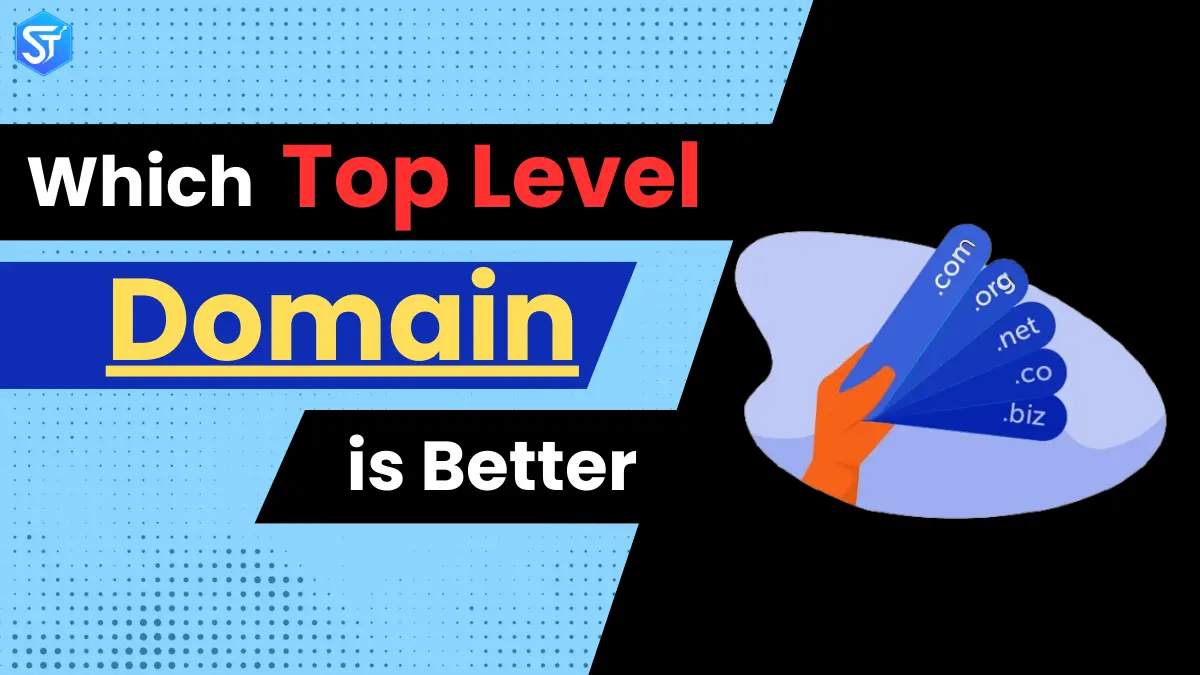Choosing the right domain name extension is an important step for any business because it helps customers easily find and access your website. With so many options available today, including new and modern extensions, it can be confusing to choose the best one for your goals. The right choice should match your brand, your audience, and the industry you serve.
The .com extension is still the most popular, accounting for nearly half of all registered domains. Its long history and user trust make it a safe choice for most businesses. However, there are many other extensions that are equally valuable in specific regions or industries. For example, local extensions like .ae or .uk work better when targeting audiences in specific countries, while industry-focused extensions like .store, .tech, or .cafe help businesses differentiate themselves in competitive markets.
Understanding the role of each extension can make it easier to make a decision. Some extensions bring credibility to local markets, while others highlight the type of service or product you offer. When you carefully study these details, you not only improve customer trust but also strengthen your overall online presence.
This is where digital strategies like SEO play a big role. Once you have the right domain extension, you can increase your visibility by using SEO services, working with SEO experts, implementing eCommerce SEO, or adopting custom SEO solutions. Together, the right domain and the right strategy make it easier for your target customers to find and engage with your business online.
What is a domain name extension?
When you look at a domain name, you’ll notice that it has two parts. The first part is the main name, like Kinsta. The second part comes after it, like .com. This last part is called the extension or TLD (top-level domain).
Some common TLDs are:
- .com
- .net
- .org
- .io
- .co
The .com extension is the oldest, created in 1985. It means “commercial.” Initially, .com was created for business sites, but soon people started using it for almost every type of website.
The first group of TLDs included .gov, .edu, .org, and .net, among others. Of these, .com and .net became the most commonly used for general websites, while .gov and .edu remained only for government and education sites.
Over the years, the number of TLDs has grown exponentially. There are now hundreds of options like .ninja, .pizza, and .george (yes, that’s real).
The main idea behind the new TLDs is to give you more choices for domain names. So, even if .com is already taken, you still have a lot of options. But despite all these new options, .com and .net are still the first choices for most people who are building a new website.
What does .com mean?
Initially, people used the .com domain for online shops and business pages, but now it is used for most commercial websites. When you see a site with the .com extension, it mostly shows that the site is for business use.
Over time, this extension became very common, and many people even started preferring it. Now you can see blogs, personal sites, and small pages operating with the .com name.
This shows that having a .com site does not always mean that the owner runs a company or an online store.
What does .org mean?
The .org domain started out as a non-profit domain. Later, the rules changed, and it is now open to charities, schools, open-source projects, and other non-profit groups.
Today, anyone can register a .org name. However, most people consider .org sites to be non-commercial websites.
What does .net mean?
The .net domain name means “network.” It was first created for sites dealing with network services such as internet providers, emails, and databases. After .com, it is the second most used extension and is used by people all over the world for a variety of sites.
In recent times, .net has gained as much value as .com. Many people choose .net when the .com name they want is already taken.
What does .co mean?
The .co LTD domain name means “company” or “corporation”. Many online businesses use this domain because it is simple and popular.
Around the world, people see the .co LTD domain as the next best choice after .com and .net. It is also often used with a country code (example: .co.uk, .co.in).
What does .io mean?
The .io domain comes from the British Indian Ocean Territory, but many tech and SaaS companies now use it. The reason is simple – IO also means input/output, which is directly related to technology. It has become a smart branding option that works well and doesn’t cost much.
Comparing .com to Other TLD Extensions: A Comparative Analysis
As the internet continues to evolve, choosing a domain extension has become more important. The .com extension has always been the first choice for many people, but other TLD extensions also offer good options. In this comparison, we take a look at .com and other common extensions like .net, .org, .co, .biz, and .io. By examining the key features and uses of these domain names and extensions, we aim to provide simple ideas that will help you choose the right domain extension for your online presence.
.com vs. .Net
The .com domain is associated with business websites and is well-known to people all over the world. It is the most common choice for companies that want a large online reach. The .net domain is mostly used by internet and network-related services. Many IT and networking companies choose .net for their websites. The decision between .com and .net depends on the type of business you have and how you want people to perceive your brand.
.com vs. .Org
The .com domain is for business use, while the .org domain was first created for non-profit groups. Even though many other websites now use .org, people still see it more for social and non-commercial work. If your site is for a non-profit, charity, or social purpose, .org is a better fit. But if your website is for business, .com is still the most reliable and common choice.
.com vs. .Co
The .com domain is still the top choice, but .co has become an easier option for business sites. People often see .co as a shorter version of .com, which makes it easier to remember. While .com is more reliable and well-known, .co works well when the .com name you want isn’t available. It provides a short, modern name with a professional look.
.com vs. .io
The uses of .com and .io domain names vary. The .com name is very common and is mostly associated with business sites, while .io has become more popular among new startups and tech groups. Many software manufacturers, tech companies, and input/output related companies use .io for their websites. When choosing between these two names, you should pay attention to your business type and the people you want to reach.
How to Choose Your Domain Name and Build Your Website
We’ve already looked at .ORG, .COM, and .NET. Now, it’s time for the fun part: choosing your domain name and building your website. Let’s keep it simple with simple steps.
Step 1: Think about your domain name
Before you worry about extensions, come up with some name ideas. Here’s how:
- Write words that match your website or brand
- Mix words together or use fun words
- Keep it short and easy to spell
Tip: Short names are easier to remember and type.
Step 2: Check out what’s free
Once you have a few ideas:
- Go to a domain registrar like Namecheap or GoDaddy
- Type your ideas into the search box
- See what names are available
Tip: If your first choice is taken, try a domain name generator to find new ideas.
Step 3: Try other extensions
If your .COM is taken, don’t worry! Try these:
- .NET
- .ORG
- Other options like .CO or .IO
Remember, a catchy name with a different extension can be better than a boring .COM.
Step 4: Buy your domain
Found the right name? Great! Now:
- Choose a reliable domain registrar
- Sign up and pay for your domain
- Consider buying it for a few years to save money
Tip: Look into domain privacy protection to keep your personal info safe.
Ranking is important:
When it comes to ranking, many things affect how a website performs, and TLD is one of them. But it’s important to know that TLD alone doesn’t determine search engine rankings. Other key factors are content quality, website structure, backlinks, and user experience. Here are some ranking points for this TLD:
- User trust: .COM domains gain more trust from users because they’ve been around for a long time. This trust can help with rankings because people are more likely to click on .COM websites in search results.
- Content relevance: Search engines look at how useful and relevant your content is. Regardless of TLD, websites with high-quality, well-optimized content tend to rank higher.
- Backlinks: The number and quality of backlinks are very important. Websites with .COM, .ORG, .NET, .CO, or .IO domains can get good backlinks if they follow proper SEO practices.
- User Experience: An easy-to-use and well-designed website keeps visitors engaged for longer and ranks higher. TLDs do not directly affect user experience.
- Keyword Usage: Careful use of keywords in domain names and content can help with rankings. This works equally well for all TLDs.
In short, while .COM used to have an advantage in search rankings, TLDs are less important today. Now, content quality, backlinks, and user trust play a bigger role in rankings. Domains like .ORG, .NET, .CO, and .IO are also good depending on the goal and branding of your site. The choice of TLD should match the purpose and audience of your website, not just focus on rankings.
Key Points
- .org domains are best for nonprofit groups because they look professional and trustworthy.
- .com domains fit most businesses and commercial projects and are often considered more trustworthy.
- .net domains are used by companies with a global reach or who want a professional image.
When choosing a domain extension, think about your audience, how easy it is to promote it, and the cost of registration.




